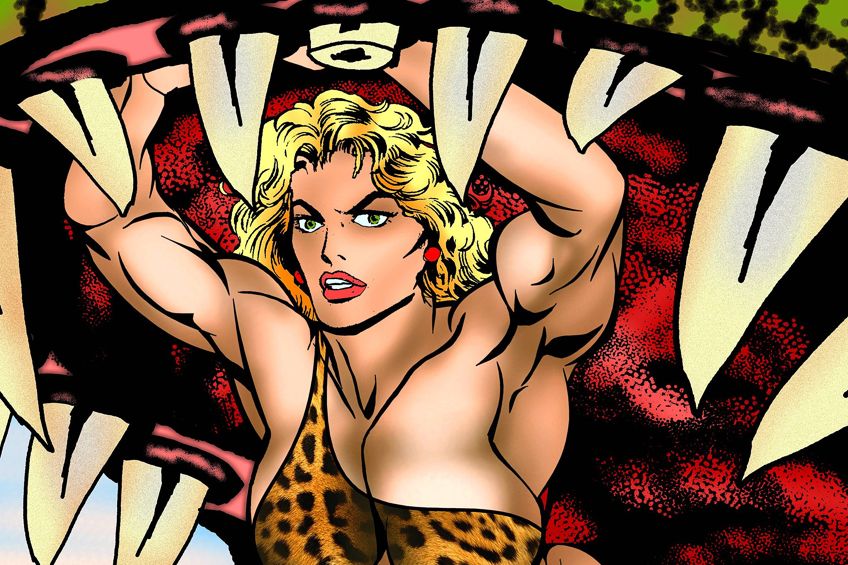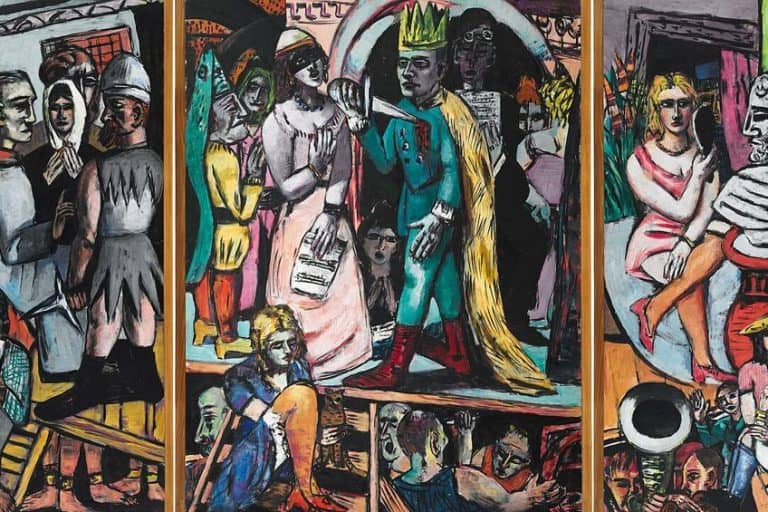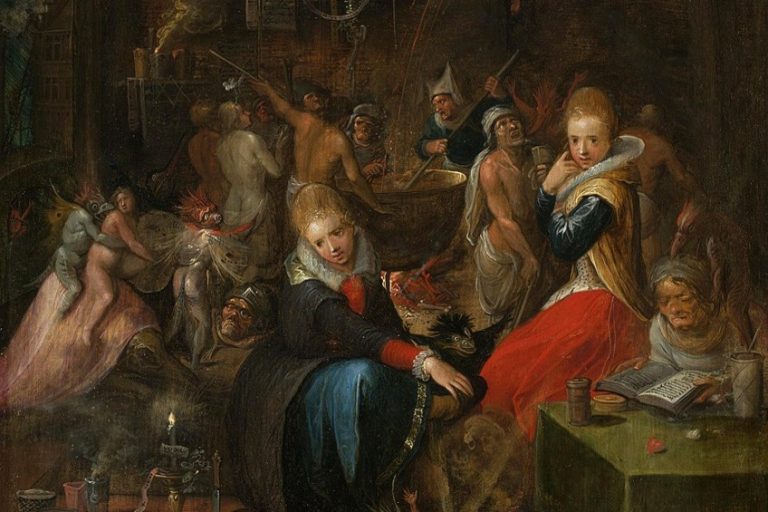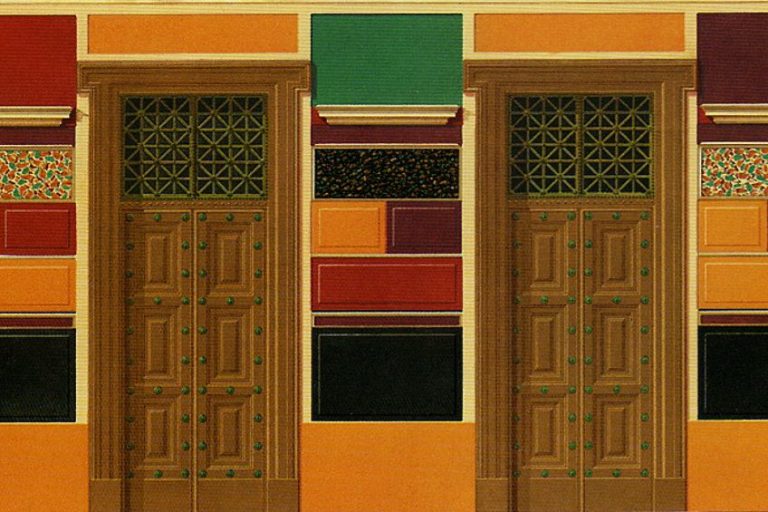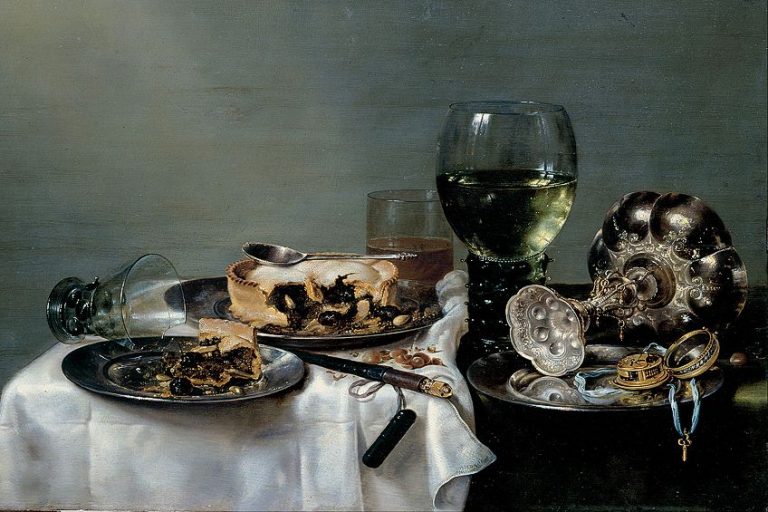Lowbrow Pop Surrealism – A Look at the Popular Lowbrow Art Movement
Lowbrow Pop Surrealism was a style of art that was heavily inspired by the popular culture of the 1960s and 1970s in America. Commonly referred to as a “retro” style, this movement was most commonly seen in the form of paintings, digital art, sculpture, collage, and even toys. The end of the Baby Boomer generation will recognize this style of art immediately, as it proved to be an incredibly popular movement at the time. Today, aspects of Lowbrow Pop Surrealism can still be seen in the modern and digital art that dominates the art world.
The Lowbrow Art Movement
The word “lowbrow” is typically used to define something that is not considered to be highly intellectual or cultured. In terms of art, the Lowbrow Art movement referred to works that were dismissed by critics as unimportant or insignificant within the broader art world. Despite this harsh definition, “lowbrow” also referred to aspects that were widely popular and accessible within the mass media, which Lowbrow Art proved to be.
Emerging as an underground visual arts style in Los Angeles, the Lowbrow Art movement had its cultural roots in comix, punk music, graffiti, tiki, and the hot-rod cultures seen on the streets of California.
Considered to be an essentially “street” culture, Lowbrow art had a great sense of humor in the artworks that were created. As a whole, the movement was thought to be very cheerful and mischievous, with some artists adding a sarcastic and sometimes tongue-in-cheek comment now and then.
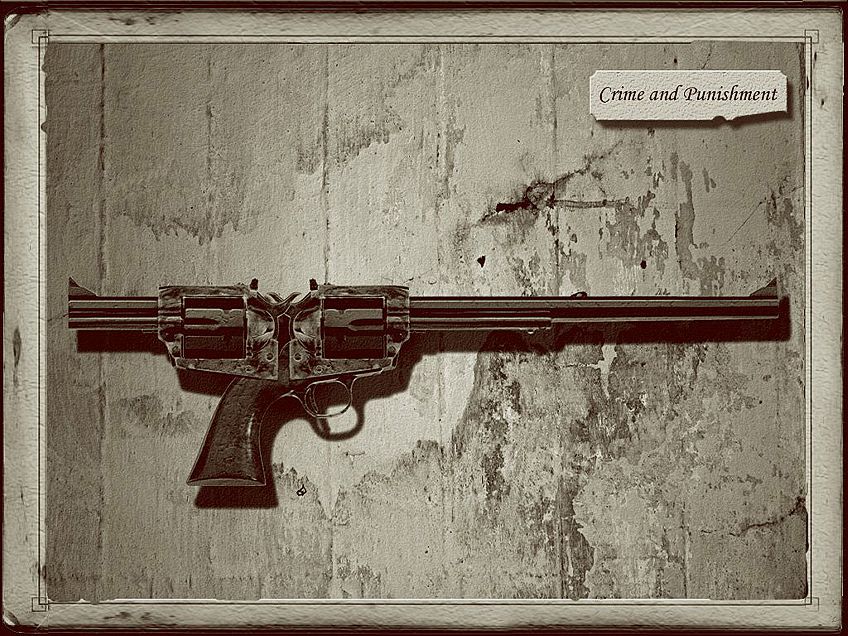
The Lowbrow Art movement. was said to have been influenced by a variety of other 20th-century art movements including Dadaism, Surrealism, and even Fauvism. Thus, the movement was also known as Pop Surrealism due to the characteristics and features it utilized. Much like the responses given to the aforementioned movements, Lowbrow Art was met with much skepticism and shock, as it was thought to mock and completely dismantle all aspects of traditional art.
However, at the time that the Lowbrow Art movement emerged, it had no inhibitions whatsoever as there was not even a proper name for it yet. The types of works that were created were simple and appealed to ordinary individuals who did not necessarily engage with or even like high art. The movement quickly grew in size and popularity, which led to a variety of offshoots developing.
Thus, after all the different avenues that Lowbrow Art helped build, it was viewed as a movement that truly defined an entire generation of artists.
What Is Lowbrow Art?
At the beginning of the Lowbrow Art movement, most of the participating artists were classified as underground cartoonists who were known for their tattoos, illustrations, and street art. As it was a largely undercover movement, the artists who experimented with the Lowbrow style were not well-known at all. In fact, the majority of these Lowbrow artists were not creatives by education. They were all self-taught artists whose artworks strayed far away from anything that could be considered and labeled as fine art.
Despite creating works that seemed to resonate with society, art critics, museums, and galleries remained incredibly skeptical about the emergence of these new types of artists onto the creative scene.
This led to doubt being cast over the Lowbrow movement, as the works that were produced demonstrated just how different the artistic style was in comparison to the conventional art admired by gallery curators, critics, and scholars. However, as with most art movements, Lowbrow Art quickly began to rise in popularity.

The first Pop Surrealism artist was Robert Williams, who was shortly followed by Gary Panter. Their early works were exhibited at several alternative galleries in New York and Los Angeles and as they were unknown, their particular artistic approach was not thought to be highbrow enough for the art world.
The rawness of underground art went underappreciated for a while and was branded as “kitsch”, with most creatives being seen as nothing more than mediocre tattooists and comic book illustrators not worthy of being called a true artist.
However, these artists flourished in their self-made environment and enjoyed the status that their academically overlooked movement had gained. This allowed the style of Lowbrow Art to spread to many places around the world, with its characteristic and visual tendencies developing further into many different branches and particular aesthetic styles. While the art world still rejected Lowbrow Art as a movement, what mattered most to its artists was that it was acknowledged by the ordinary people in society who were their target audience.
ff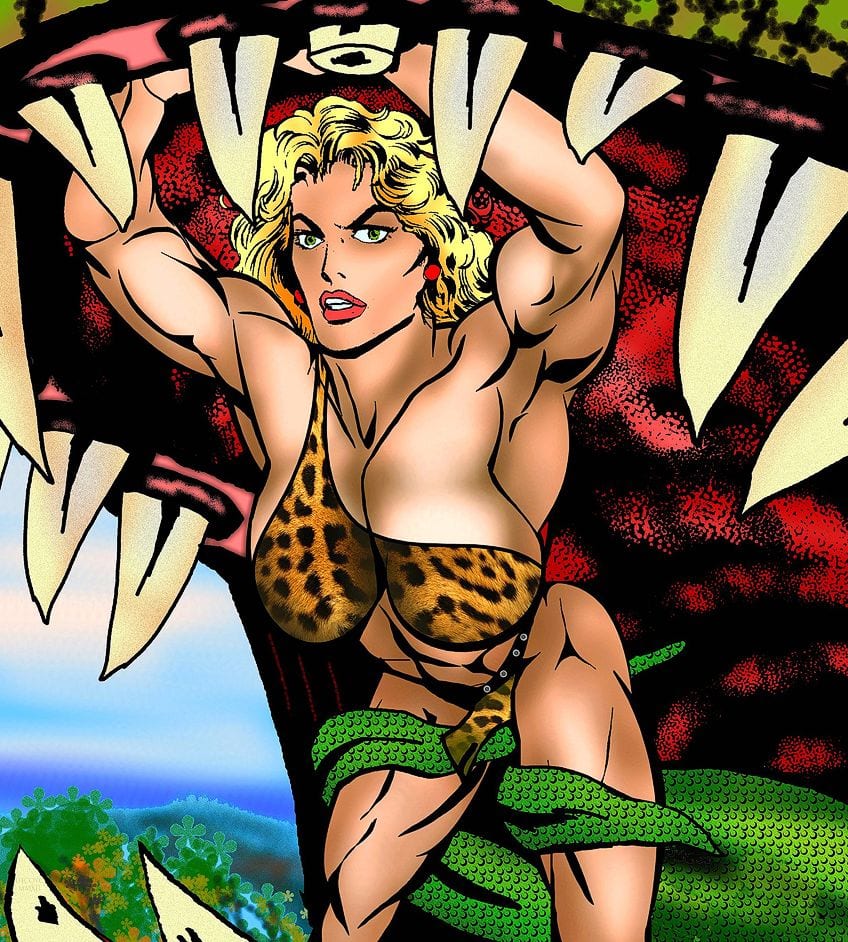
As the movement grew, hundreds of artists began adopting the Lowbrow style, which meant that more art galleries were starting to openly exhibit Lowbrow Art. Two iconic magazines, Juxtapoz and Hi-Fructose, were later launched and helped promote the Lowbrow Art movement immensely. This led to the very first formal Lowbrow gallery exhibition taking place in 1992, which was designed to illustrate the significance of the art movement.
The ultimate goal of Lowbrow Art was to infuriate anything considered to be traditional. While artists were aware of the “rules” of fine art, many made their own up as they went along. This shameless disregard for the conventions of art allowed a raw, unrefined, and basic style of art to develop, which eventually paved the way for a more polished and refined type of Lowbrow Art to eventually emerge.
Seen as a populist matter, Lowbrow Art became easily relatable to many artists and enthusiasts, which added to the success of the movement.
The Origin of the Name
Despite the movement being in existence since the late 1960s, artist Robert Williams only took credit for coming up with the term “Lowbrow Art” in 2006. In an article published in his iconic Juxtapoz magazine, Williams stated that he was forced to think of a name for the movement almost on the spot. This happened when cartoonist Gilbert Shelton approached him in 1979 to make a book of his famous paintings and Williams was required to provide a title for the book.
The work was subsequently named “The Lowbrow Art of Robt. Williams”, as no approved art carrier agreed to recognize the type of art that Williams created under the title of Lowbrow Art. As both the content of the works and the title created by Williams opposed everything that was associated with high culture, Lowbrow Art was considered a suitable name for the movement.
When asked what the name meant, Williams explained it to refer to a “cartoon-blemished version of abstract surrealism”.
As Lowbrow Art was not considered to be a serious art movement at the time, Williams came up with the self-deprecating name in an attempt to poke some fun at the style. By emphasizing the term “lowbrow”, Williams further highlighted how different his artworks were to traditional art, as there was nothing cultured and academic about them at all. Although the name ended up sticking, Williams admitted that he felt it was a bit unfitting at times and thus started referring to his own work under a slightly different name.
The Rise of Pop Surrealism
Lowbrow Art has also been referred to as Pop Surrealism from time to time, which brought forth the more modern title of “Lowbrow Pop Surrealism”. This name was used to talk about later artworks that fell into this movement. As Lowbrow Art manifested itself in a variety of locations and social situations, the style was influenced by many different aspects and cultures.
This led to the Lowbrow Art movement growing in terms of its style and as some artists attempted to take their artworks to the next level, Pop Surrealism was born.
The original movement of Surrealism began in Europe after the end of World War One and was said to have developed in reaction to the madness and violence that the war generated. The term “surreal” refers to anything that displays qualities beyond reality, with surreal artists expressing a desire to create truly astonishing and unconventional art so as to be against the customary art norms of the time.
The term “Pop Surrealism” was eventually thought up by The Aldrich Contemporary Art Museum during a 1998 exhibit. The type of artworks on display drew from a multitude of lowbrow concepts and was considered to be essentially Pop Surrealist in nature. As it developed into its own distinctive art culture that was completely uninhibited by any creative rules, Pop Surrealism existed as a fusion between pop culture icons and the ambiguity of the Surrealist style.
Soon, the line between Highbrow art and Lowbrow Pop Surrealism began to blur, as artists began using recognizable pop icons like Disney characters and Marilyn Monroe to convey serious social and political messages. While some techniques of Pop Surrealism were reminiscent of fine arts, artists were soon captivated by the intoxicating Lowbrow style and sought to merge the concepts of the two movements.
What Was Surrealism Pop Art?
When combining the elements of Lowbrow Art and Pop Surrealism, the resulting movement was made up of artists who had professional painting skills but remained attached to the intrinsic characteristics and ideas of Lowbrow Art. Essentially, beautiful artworks that paid homage to traditional techniques were produced, with underground comix and other motifs still being included.
Thus, the types of artworks that were created in this “best of both worlds” style were known as Lowbrow Pop Surrealism pieces.
The aspect of Pop art within Lowbrow Pop Surrealism was taken from the original movement of the same name that developed in the middle of the 20th century. The reputation of Pop art grew through its use of conventional and everyday objects in an elevated setting. Things like simple comic strips, newspaper cuttings, soup cans, and other household items were turned into prominent artworks worthy of attention and praise, as they demonstrated the blending of common items and fine art.

As a descendant of the famous Dada movement, Pop art brought a rebellious streak into the Lowbrow Pop Surrealist style. The majority of the artworks that were produced during the Pop art phase were nonsensical in nature, which mirrored the plebeian types of artworks that were created using the Lowbrow Art style. As Pop art intended to confirm the idea that art could be drawn from any reference point and that no bureaucracy of culture should hinder it, so too did the Lowbrow Pop Surrealism movement.
As Lowbrow Art mixed with Pop Surrealism, a more cultured and traditionally beautiful type of art emerged.
However, the artworks created still adhered to the core values of Lowbrow Art, as they demonstrated the underground references that first inspired the movement. Despite the artists’ talent, their Lowbrow Pop Surrealism artworks did not reach the snobbish heights of Highbrow art. The purpose of mixing these styles was to blur the line between high and low art so as to give way to a new class of art that could be defined as Pop Surrealism.
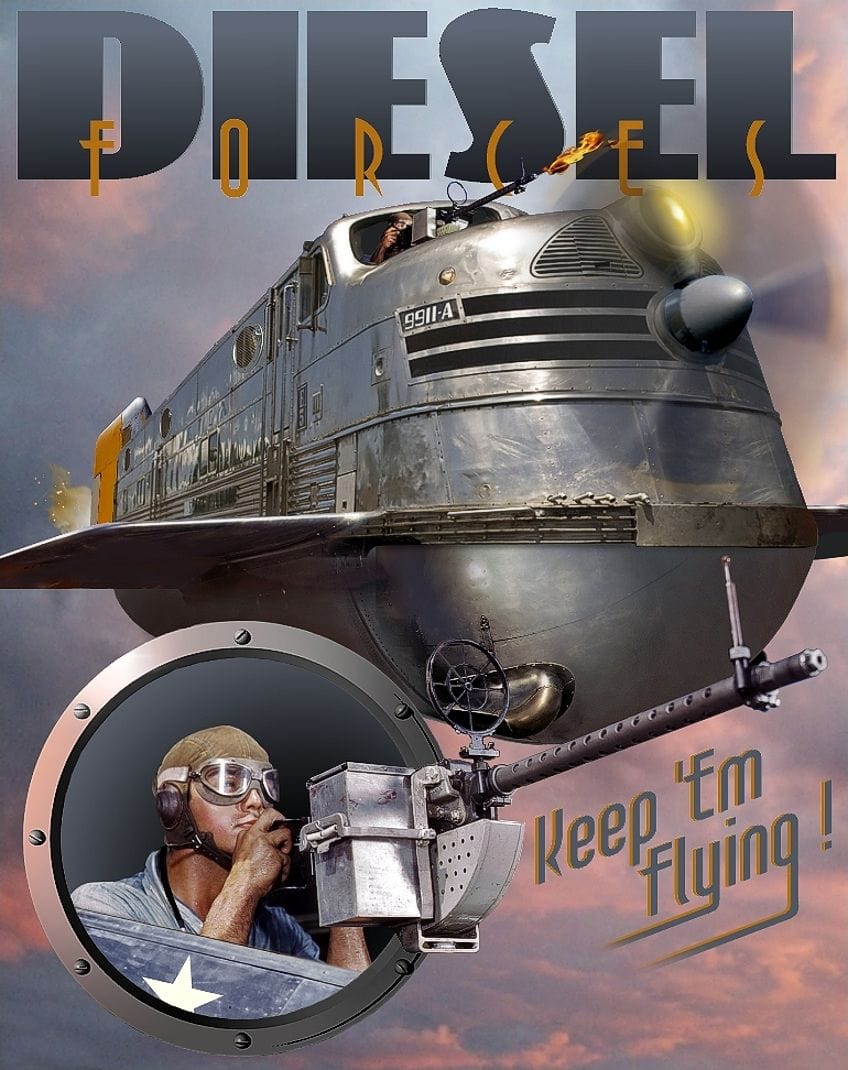
What the Lowbrow Pop Surrealism movement essentially did was take the best features from each style and combine them. The type of artworks to appear were satirical in nature and delivered popular images that were defined by raw characteristics and a political or social message.
With relatable content being depicted through exceptional artistic skills, Lowbrow Pop Surrealism reached an audience who were not all interested or educated in art and presented them with ordinary topics that did not demand an artistic explanation.
Juxtapoz Art and Culture Magazine
Possibly the most influential publication to come out of the Lowbrow Pop Surrealism movement was Juxtapoz magazine, which was created by Robert Williams in 1994. With the help of film producer Greg Escalante and skateboard designer Eric Swenson, Williams was able to come up with a magazine that communicated and validated what the Lowbrow Art movement stood for.
“Juxtapoz” had a huge impact on the subsequent representation and prominence of Lowbrow artists, as it provided a space for their work to be seen.
Juxtapoz was built on the philosophies and merits of the pop culture that had manifested itself in California during the 1970s. The magazine was also encouraged by the freedom of artists who had broken away from the traditional customs that governed the conventional New York art world. Established with the mission to blend modern cultural genres ranging from psychedelic art to graffiti and street art, Juxtapoz demonstrated great pride in its cultural roots and did not hesitate to show it in its publications.
Said to be the backbone of Lowbrow Art writing, Juxtapoz was an integral part of the art movement and helped shape and further expand its ideas. By giving Lowbrow artworks more visibility and a background in writing, the publication was able to help promote the spread of Lowbrow Art. After 27 years in publication, Juxtapoz is still around today and remains the second most-read art magazine within the United States.
In addition to art and cultural affairs, “Juxtapoz” expanded in the early 2000s to cover other styles and genres of art.
Hi-Fructose Magazine
Another important Lowbrow Art magazine was Hi-Fructose, a quarterly print art magazine founded in 2005 by artists Attaboy and Annie Owens. While Juxtapoz leaned more towards showcasing Lowbrow Art and its artists, Hi-Fructose focused on the elements of Pop Surrealism within its publications.
In an effort to reassure its readers that the content within Hi-Fructose remained educational and fresh in every publication, the magazine focused on art that was able to transcend a variety of trends. As the main effort of Hi-Fructose has always been to focus on aspiring artists, the magazine also represents a combination of both new and emerging contemporary artists, as well as very celebrated artists.
The emergence of “Hi-Fructose” has helped to strengthen the popularity of Pop Surrealism, with the magazine still being published today.
Characteristics of Lowbrow Pop Surrealism
As the movement has expanded, the cultural influences that have been associated with Lowbrow Pop Surrealism have also grown. In addition to underground comix as one of the main characteristics for the art style, punk music, pulp art, “B” horror movies, Japanese anime, soft porn, icons of pop culture, and other subcultural contributions were all sources of inspiration.
The majority of the artworks created were humorous in tone, with an added cheerful, naughty, or sarcastic feel at times.
Due to this, one of the main characteristics of Lowbrow Pop Surrealism art was the artists’ ability to laugh at the established customs of high art. Artists were well aware of the rules that controlled art and deliberately chose not to comply with them, which allowed them to produce artworks that contained a great sense of humor. While the social and political remarks that most artworks made were different at times, the element of humor remained a constant.
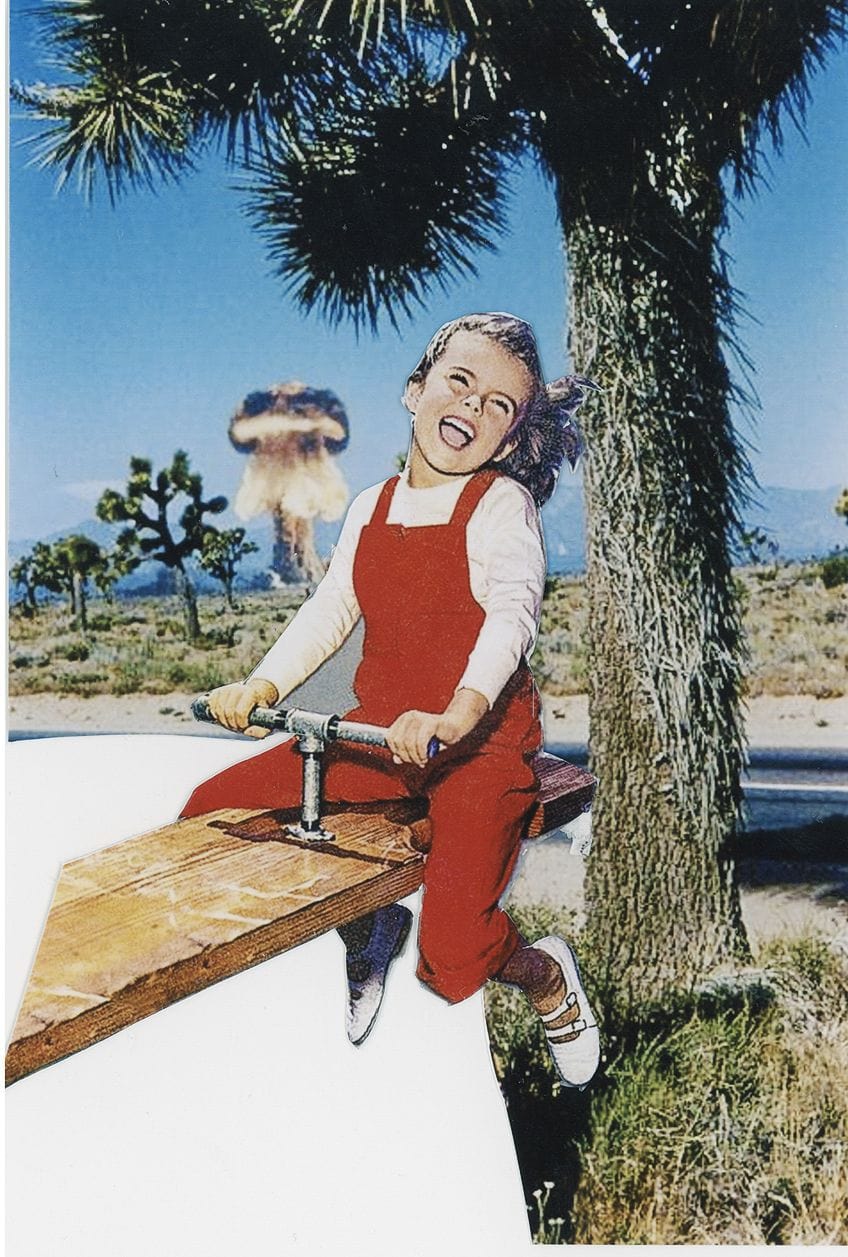
A0822529, CC BY-SA 4.0, via Wikimedia Commons
Famous Lowbrow Pop Surrealism Artists and Their Artworks
As the movement was seen as quite controversial for a large period of time, Lowbrow Art was only practiced by some artists initially. However, as the movement began to gain some momentum and was slowly accepted by both audiences and the art world, many artists fancied themselves as Pop Surrealism artists. Below, we will be taking a look at some of the most well-known names to emerge from this movement, along with some of their notable artworks.
Ed “Big Daddy” Roth
| Lifespan | 1932 – 2001 |
| Nationality | American |
| Known Mediums | Cartoonist, illustrator, pinstriper, and custom car designer |
| Most Famous Artworks | Rat Fink (1963) Big Bad Doggy (c. 1960s) Fishtail Burnout (c. 1960s) |
American cartoonist Ed Roth, who frequently went by the pseudonym of “Big Daddy”, has been credited with organizing Lowbrow Art into an actual movement during the late 1950s. Creator of the iconic hot rod icon, “Rat Fink”, Roth was seen as an instrumental member of the Kustom Kulture and hot-rod movement during the 1950s and 1960s in Southern California. When considering his career as an artist, Roth is possibly best known for his hideous and distorted caricatures of cartoons.
Roth’s cartoons were typically characterized by a demented rodent with protruding eyeballs, a manic grin, as well as a voracious expression on its face.
Most of his artworks were created to appear on custom cars, as Roth was greatly involved with the car counterculture that had exploded in the 1960s and 1970s. However, as hard as Roth tried to create a cartoon that resisted the wholesome image of the generic “Disney” look, his iconic Rat Fink mascot became an instantly recognizable icon that was associated with the Kustom Kulture.
The majority of Roth’s artworks adopted a tongue-in-cheek approach to fine art, as the characteristics of his works strayed incredibly far from what was considered to be fine art.
Within his artworks, Roth was able to combine his hyper-exaggerated personality with the culture of the time, which gave his art an instant and cult-like following. In addition to other artists of the 1960s and 1970s, writers, filmmakers, musicians, and tattooists expressed a great fascination with his cartoons and strove to incorporate them into their own work.
Robert Williams
| Lifespan | Born 1943 |
| Nationality | American |
| Known Mediums | Painter and cartoonist |
| Most Famous Artworks | Hot Rod Race (1976) Appetite for Destruction (1979) Island of Infantile Avarice (1993) |
Possibly the most recognized Pop Surrealism artist from the Lowbrow Art movement is Robert Williams, who was also the founder of the popular Juxtapoz magazine. Williams is credited with introducing the term “lowbrow” into the fine arts vocabulary and since no one has contested his statement, he is widely considered to be the artist who essentially named the entire movement.
Williams refers to the Lowbrow Art that currently exists as “cartoon-tainted Abstract Surrealism”, while he views his own work as “Conceptual Realism”.
As one of the original Pop Surrealist artists still alive and producing artwork, Williams is treated as a significant member of the Lowbrow movement. As one of the first underground cartoonists on the scene, Williams helped produce the infamous number 4 issue of Zap Comix along with other unconventional artists.
This publication demonstrated his unique blending of the elements of West Coast outlaw culture, film noir, and psychedelic art that could be seen in his artworks.
When Williams first began his artistic career, he painted in the style most respected by the Old Masters. He made use of oil paints and varnish to create meticulously detailed artworks that would have been accepted as high art. However, in the mid-1960s, Williams was intrigued by the artworks of Ed Roth and soon joined the Lowbrow Pop Surrealism movement. Williams flourished in the non-conformist and anti-establishment Lowbrow Art movement, with a variety of influences being seen in his incredibly expressive artworks.
Camille Rose Garcia
| Lifespan | Born 1970 |
| Nationality | American |
| Known Mediums | Painting |
| Most Famous Artworks | The Witches Laboratory (2012) The Ballad of Neptune (2018) Melodia Dreams of Bats (2019) |
One of the few female artists within the Lowbrow Pop Surrealism movement was American painter Camille Rose Garcia. Producing artworks that incorporate her creepy and gothic cartoon style, Garcia reworks traditional fairytales by adding her own spooky and macabre twist to them. Inspired by author William Burrough’s cut-up novels, Surrealist cinema, as well as Disney and Fleischer animations, Garcia’s works take on a distinctly Pop Surrealist feel and have been exhibited all over the world.
https://www.youtube.com/watch?v=zh1vD8u_lJU
Appearing in iconic magazines such as Juxtapoz, Modern Painter, and Rolling Stone, Garcia has proven herself to be an influential Pop Surrealism artist within the modern age. Studying Fine Arts at university, Garcia began apprenticing at the age of 14 with her mother, who was also an artist. Together, they would work on murals which would later inspire Garcia to pursue a career in the arts. When considering her inspiration for her unique brand of art, Garcia credited punk shows to be the start of her fascination with the mysterious side of art.
The narratives that Garcia creates in her wasteland fairytale representations differ greatly from their original stories. While the characters are somewhat recognizable, the way they have been depicted and their environment help create an entirely new and more modern version of the classic story.
Despite the majority of Garcia’s artworks floating in limbo between fantasy and pure gothic horror, they are not frightening to look at. It is more terrifying to consider the capitalist utopia that she comments on within her works.
Audrey Kawasaki
| Lifespan | Born 1982 |
| Nationality | Japanese-American |
| Known Mediums | Painting |
| Most Famous Artworks | My Dishonest Heart (2008) Yuuwaku (2009) Suyin (2017) |
Another notable female artist practicing within the Lowbrow Art movement is Japanese-American painter Audrey Kawasaki. Despite growing up in Los Angeles, Kawasaki read Japanese manga comics as a child, which inspired her to begin drawing from an early age. Today, she has credited Japanese manga as influencing the particular type of Lowbrow artworks she produces. As a teenager, she enrolled in a Fine Arts class where she learned the basics of drawing and painting, which have aided her immensely in her career.
When considering Kawasaki’s artworks, her fine lines and muted color palette give off a gentle and peaceful feel to them.
Through juxtaposing the themes of virtue and eroticism against one another, Kawasaki touches on the mysterious fascination surrounding feminine sensuality within her works. Her sharp paintings are created with the utmost precision and meticulousness and the wooden panels upon which they are painted add a sense of warmth to her subject matter through the natural grain.
While her greatest influence has been manga, as seen through the Japanese figures present in her artworks, Kawasaki also draws inspiration from Western traditions such as Art Nouveau. By including such alluring and unrestrained female subjects within her paintings, Kawasaki emphasizes their fragile beauty through creating direct and seductive eye contact with the viewers.
This forces audiences to fully comprehend the image they are seeing, which allows them to take in all of Kawasaki’s gentle nuances of colors, shading, and line.
The Legitimacy of the Lowbrow Art Movement
The biggest issue when considering the validity of Lowbrow Art as a movement was the fact that it struggled to gain any sort of approval from the traditional high art world. While the art world was not accepting of many movements when they first emerged, the Lowbrow Pop Surrealism movement proved to be an issue as the very nature of the artworks stood against everything that conventional art sought to uphold. However, as the line began to blur between low and high art, the movement gained more acceptance in society.
If a factor that speaks to an art movement’s ability to last is its legitimacy, then the Lowbrow Art movement could certainly be seen as legit.
Lowbrow Art appealed to a wide audience made up of those who admired art and those who knew nothing about art. Lowbrow Art responded to the needs of ordinary individuals who sought a common cultural language in art that they could relate to, which defined an entire generation of artists. Therefore, it would not be fair to view Lowbrow Art as anything other than the legitimate movement it clearly was.
The Legacy of Lowbrow Pop Surrealism
Today, Lowbrow Pop Surrealism is still practiced by several prominent artists. However, with the emergence of the new millennium, many artists began to make use of computer-based tools, techniques, and software’s to create their Lowbrow artworks. Some very incredible artworks have been derived from programs like Adobe Photoshop and the 3D modeling application called Maya. Being digital, these artworks have abandoned traditional artmaking principles, which makes them true examples of Lowbrow Art.
Many artists went on to master the technology that suddenly became available, which led to an entirely new branch of Lowbrow Art emerging. Unfortunately, with this great change happening in the art world, a major identity crisis hit the Lowbrow Pop Surrealism movement. With access to technology, anyone could create a kitsch artwork and suddenly claim to be a Lowbrow artist. While the art movement worked to include everyone within its sphere, those creating real Lowbrow art were still given the title of an artist, unlike amateurs.
Thus, Lowbrow Art proved to be an interesting movement as artists created technically perfect works in terms of their artistic features and elements.
However, they focused on subject matters that were considered to be uncultured so as to be able to accurately classify their artworks as “lowbrow”. In terms of development, Lowbrow Art has gone a long way from not being acknowledged as art at all, to becoming a presentable and highly celebrated style of Surrealism Pop art.
Over the years, the movement has transformed from a rough and crude style into an incredibly sophisticated and beautiful one. With artists carrying the legacy of Lowbrow Art into the digital world, its journey has allowed the movement to transcend the various other styles that have emerged.
In essence, Lowbrow Art transformed from an undesirable and unpopular style into a multi-million-dollar movement, with its artworks being auctioned, collected, and exhibited in galleries all over the world.
Lowbrow Pop Surrealism Artists You Can Follow Today
While the Lowbrow Art movement is still around today, many newer styles are constantly cropping up that have eclipsed it slightly. Nevertheless, if you are still greatly fascinated by this iconic movement, you can follow the careers of the artists below to see Lowbrow Pop Surrealism within a modern-day context through the contemporary artworks that they are producing.
Franc Kaiser
Painting with acrylics on cardboard, Franc Kaiser is a self-taught Swiss painter who lives in Shanghai, China. Each of his paintings being with a mere idea and a composite sketch before he pencils the final drawing onto cardboard. Due to this, Kaiser’s process of creating an artwork is an incredibly long one as it is built up over several stages, which can take anywhere between days and weeks to complete.
Within his artworks, Kaiser often depicts ugly sphinx cats in an incredibly realistic and haunting way, with some subtle elements of Surrealism mixed in as well. By combining lifelike creatures with bizarre concepts, Kaiser is able to explore themes such as our suppressed consciousness and the ruthless nature of life.
Adding to the biology allegory within his works, Kaiser plays on the “fish out of water” metaphor by never adding any Asian design features to his work, despite being a foreigner living in China.
Kaiser’s daily experience of living in a different culture reflects both the fascination and fear found beneath the surface of his artworks. Inspired by the feel of 1970s science-fiction illustrations, many amusing and satirical elements can be found within his paintings. A relatively new artist on the scene, Kaiser’s first international exhibitions were recently held in 2020 and 2021 in Los Angeles.
Arabella Proffer
American artist Arabella Proffer is another creative to watch. Having garnered quite a reputation for herself, Proffer’s works are currently part of more than 60 private collections and have been exhibited throughout North America and internationally in Europe, the Middle East, and Australia. Within her paintings, Proffer combines her fascination with portraits, visionary and mystical art, the history of medicine, and biomorphic abstraction to create truly colorful and interesting artworks.
In her current series, titled Acids and Sugar, Proffer brings together elements of botany, biology, space, illness, as well as the development and progression of cells. When viewing these paintings, Proffer’s very distinct color palette of pink, blue, green, and purple hues dominate the canvas. Within this specific series, her works are characterized by their flamboyant nature, as the objects appear to be melting and liquefying as we speak.
Despite exploring elements of science, Proffer’s works look to be taken right out of her imagination.
Konan Lim
Another artist who is currently creating works heavily inspired by the Lowbrow Pop Surrealist movement is Konan Lim. Born in the Philippines, Lim developed a passion for art from an early age. As a child, he went on to win numerous art competitions which spoke to the level of artistic talent he already possessed.
In 2007, Lim moved to Dubai to become an architect but his interest in painting still captivated him greatly and he began his professional career in 2012.
Within his artworks, Lim combines elements of Pop Surrealism with wisps of childhood wistfulness and whimsical dreams. By carefully developing his eccentric style, Lim has been able to transform happy thoughts and memories into true-to-life interpretations in his paintings. His characters are all depicted to be stuck in a playful sort of nostalgia which he seamlessly blends with features from contemporary society.
Mixing a sometimes dark and skeptical atmosphere with fun surprises, Lim’s works have typically been described as a “cuteness overload”. The detailed elements that he juxtaposes against his occasionally indistinct backgrounds provoke an exciting question, which encourages viewers to admire his paintings in search of an answer. Playing on a “through-the-looking-glass” theme, Lim finds a way to expertly balance joyful childhood memories with distorted and Surrealistic images to create paintings that truly stand out.
The Lowbrow Art movement proved to be incredibly important within the development of pop culture, as it opened the gate for artists to experiment way beyond the confines of traditional and high art. Despite not having an official name until the start of the 1990s, Lowbrow Pop Surrealism was a ubiquitous style that used humor and sarcasm as its most powerful tools. If you have enjoyed learning about this truly captivating movement, we encourage you to read further.
Suggested Reading
As the Lowbrow Art movement was and is still so diverse, many other interesting spheres of the style are constantly emerging. After going through this article, you may still be wondering: what is lowbrow art? If so, the below book has been suggested for its immense coverage of the most influential Pop Surrealism artists.
Pop Surrealism: The Rise of Underground Art
This book features a comprehensive collection of the works of Lowbrow Pop Surrealism’s top artists like Robert Williams, Mark Ryden, Eric White, Camille Rose Garcia, and Todd Schorr, among others. Additionally, this volume includes informative essays written by some of the leaders of this influential movement, led primarily by iconic Pop Surrealism artist Robert Williams. Containing well-printed images and accompanying illustrations, this book provides a great overview of the timeless movement.
- The irst comprehensive survey of the Pop Surrealism/Lowbrow Art
- Includes informative essays by famous art luminaries
- Look at images from 23 of the movement's top artists
Isabella studied at the University of Cape Town in South Africa and graduated with a Bachelor of Arts majoring in English Literature & Language and Psychology. Throughout her undergraduate years, she took Art History as an additional subject and absolutely loved it. Building on from her art history knowledge that began in high school, art has always been a particular area of fascination for her. From learning about artworks previously unknown to her, or sharpening her existing understanding of specific works, the ability to continue learning within this interesting sphere excites her greatly.
Her focal points of interest in art history encompass profiling specific artists and art movements, as it is these areas where she is able to really dig deep into the rich narrative of the art world. Additionally, she particularly enjoys exploring the different artistic styles of the 20th century, as well as the important impact that female artists have had on the development of art history.
Learn more about Isabella Meyer and the Art in Context Team.
Cite this Article
Isabella, Meyer, “Lowbrow Pop Surrealism – A Look at the Popular Lowbrow Art Movement.” Art in Context. September 15, 2021. URL: https://artincontext.org/lowbrow-pop-surrealism/
Meyer, I. (2021, 15 September). Lowbrow Pop Surrealism – A Look at the Popular Lowbrow Art Movement. Art in Context. https://artincontext.org/lowbrow-pop-surrealism/
Meyer, Isabella. “Lowbrow Pop Surrealism – A Look at the Popular Lowbrow Art Movement.” Art in Context, September 15, 2021. https://artincontext.org/lowbrow-pop-surrealism/.


